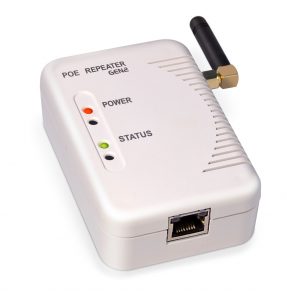Overcoming deployment challenges with EnOcean technology
Issue :
read all articles online
read as pdf
Self-powered wireless sensor solutions are well established in Industry 4.0 applications. When implementing wireless sensors, gateways and repeaters, however, various challenges can occur. This successful deployment by Pressac Communications underlines, what challenges need to be faced, and how a versatile IoT solution based on EnOcean technology was able to overcome challenging site conditions and deliver a cost effective solution.
The customer required a cost effective Internet of Things (IoT) solution to understand electrical current and operating temperature norms of factory equipment, including conveyor motors and gearboxes. The management sought to predict equipment failure and eliminate costly downtime, move away from a scheduled maintenance plan and adopt a more efficient predictive model of operation. The solution was required to monitor electrical current and machine temperatures, define normal operation ranges to create standard operating profiles, allowing thresholds for alerts and work orders be generated.

The Pressac EnOcean Repeater allows the simple repeating of all valid radio telegrams for devices based on the EnOcean wireless standard.
The Challenges
During the installation, multiple sensors including Pressac’s energy harvesting CTs and three channel temperature sensors were deployed (indoors and outdoors). Due to challenging site conditions such as a large building footprint and structural steel fabric, not all of the sensors were within range of the EnOcean gateways. Additional deployment challenges included electrical noise from variable frequency drives and limited access to mains outlet sockets for additional gateways.
The IoT Solution
To overcome these challenges cost effectively, we used the Pressac EnOcean Repeater with selective repeating functionality. Using the device in link test mode, it was possible to identify optimum repeater positioning. Knowing the optimum installation position, the devices could then be powered via existing Ethernet network infrastructure.
The Pressac EnOcean Repeater’s link table was then populated with the required devices by remote commissioning. Using selective repeating functionality, some telegrams were repeated twice; extending the range of selected sensors up to 90 meters. Selective repeating functionality allowed multiple repeaters to be used without adverse radio collisions. EnOcean sensors were added to the Pressac EnOcean Repeaters’ link table, entries could be selectively repeated; facilitating a versatile and robust solution.
New articles in Smart Spaces
Top articles





